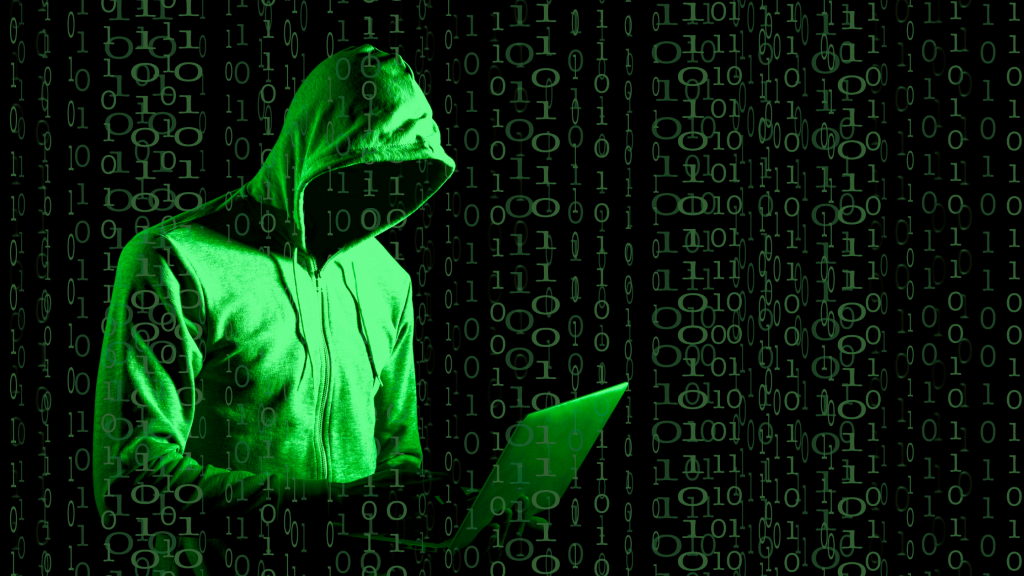
I know that IT Support LA can start sounding like a broken record when it comes to cyber threats and specifically Ransomware, but new global figures are quite disturbing. According to a survey by market research firm IDC, more than a third of all organizations (not just businesses) worldwide have been the victims of Ransomware, and that is not a cumulative number over the past 5 years since this type of attack began rapidly proliferating around the globe, this is just within the last 12 months.
Many businesses still do not take this threat as seriously as they should. In our capacity as one of the pre-eminent Managed IT Services providers among the IT Support Los Angeles Community, we still run into business owners and administrators who have never even heard of it!
Think about that for a second: Ransomware is the single-most prevalent and fastest growing cyber threat over the last 5 years – not just in the United States, but in the world, people in charge of running commercial enterprises don’t know it exists? Makes one wonder just what kind of IT support they have that the subject never came up. The mere fact that these business owners are talking to IT Support LA indicates a dissatisfaction with their current IT services situation.
A brief overview:
What is Ransomware and how does it work?
Ransomware is a malicious, executable program that takes control of the data and operating systems of a network and encrypts them so that the business has no access to its computers and possibly its servers. It usually enters the network through an error by an end-user. ‘Phishing’ emails are sent. They look like normal communications from trusted sources, like FedEx asking about an attached invoice or through a link to ‘their’ website. Once opened or clicked the malware floods into the system, locking it up, and a screen appears demanding a ransom in an untraceable cybercurrency like Bitcoin.
IF the ransom is paid, the businesses should receive a ‘decryption’ key to free up their data and network.
But much more often, companies that pay the ransom DO NOT get their all data back. Only as far back as 2018, the percentage was about 40%. According to Forbes, the very realistic and extremely scary percentage of companies that pay, but do not get all their data back is a shocking 92% in 2021.
And yet, people still ask this question:
Should you pay off ransomware?
The short answer is: No.
The long answer is: HELL NO!
We’ll let the FBI explain it HERE.
Can Ransomware be stopped?
Not even the best in-house IT services team or outsourced Managed IT Services provider in the world can keep Ransomware from getting into a network. They can make it more difficult with strong Cybersecurity defenses, but one wrong click from an unthinking employee opens the floodgates. It’s what the IT support team does next that stops the attack from snowballing through the system.
Employees need to know that if they see that ransomware screen, they MUST turn off the computer at once and call the IT HelpDesk immediately. The first post-attack safeguards which IT Support LA puts in place will contain the malware within the infected computer.
From then on, it’s a fairly quick and simple matter to essentially wipe the computer clean and reinstall the data from the secure backups we have created for the network – it’s a little more complicated, but that is the gist of it. Generally, the business is looking at only one computer being down for about 2 hours.
Your greatest strengths are in the three types of backups:
Local Backup
Cloud Backup
And for that extra layer of disaster protection:
Cloud to Cloud Backup
Do NOT Leave Yourself at Risk – See How Prepared You Are:
IT Support LA offers a completely FREE Security and Network Assessment. The comprehensive report we produce is yours to keep with no strings attached. There is NO obligation to ever use our Managed IT Services. Call us today or simply fill in the form on this page.
818-805-0909
Frequently Asked Questions
Q: Is there any solution for ransomware?
A: The best protections should be ‘Next Generation’ - not what you’ve had in your network for a decade. Cyber criminals change their Ransomware strains constantly – you need to keep your defenses up to date. Minimum defenses:
Firewalls
Anti-Virus (AV)
Multi-factor authentication (after passwords, initiate key questions, thumbprint authentication etc.) Security Awareness Training for end-users – this needs to be ongoing – at least every six months.
Excellent email screening to keep suspicious emails from reaching your employees.
Employ VPNs (Virtual Private Networks). These will not stop Ransomware, but they will slow the infection. Seconds count.
After that, the solution is a mini Disaster Plan – the processes and steps that MUST happen immediately to stem the advance of the malware. Once stopped you need to have solid, reliable, and regularly tested backups that you can depend on to restore the data once you’ve wiped the infected device(s) clean. Do your best to protect yourself, but the key is to have a fast response when it does happen – because it will.
Q: Can ransomware spread through WIFI?
A: Yes. Once in a system, it uses both hard-wired and wireless connections to spread throughout the network.
Q: Can ransomware steal data?
A: A classic Ransomware attack does not steal your data – it simply encrypts it so that you cannot use it until you pay. They don’t care about your data. They only care about your money. Various other types of hacks or data breaches are focused on data theft.
Reportedly, there are new Ransomware strains that do both: Encrypt your data and steal it. Depending on what the strain is that attacks you, and if it can be identified, a Dark Web scan is in order. The Dark Web is where stolen data is bought and sold.
Q: Does Windows 10 have ransomware protection?
A: It does, but even the Microsoft tool ‘Controlled Folder Access’ cannot stop Ransomware, but every safeguard should be used – at the very least to slow the infection. Check with your IT support to see if you need to activate this (generally, they should have this covered on their end already).
Follow the steps provided by Microsoft HERE.


